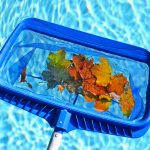OCTOBER IS OPTIONAL FOR POOLS
How is it October already? October celebrates Breast Cancer Awareness, Fire Prevention Week, Indigenous Peoples’ Day, and Halloween. It’s somewhat of a transitional month with weather starting off warm and then heading into cooler, fall crisp nights. With such fluctuations, many pool owners find October to be closing season. Still, there are many that like to keep their pools open and take advantage of those random warm days remaining to enjoy their pools.
INDIAN SUMMER
October weather can be very varied here in the Northeast. Many of us that love warm weather hope for an Indian summer. This is a period of unseasonably warm, dry weather that sometimes occurs in late October or November in the central and eastern United States. The term originated in New England and probably arose from the Indians’ practice of gathering winter stores at this time. If we do get lucky to have these temperatures, pool owners like to get in some fall swim time.
FALLING FOR YOU
If you are keeping your pool open, be aware that leaves and other debris will be getting into your pool. Leaves can lead to staining on the surface; it is important to get them out quickly to prevent such. They also contribute to the buildup of nutrients in the pool that algae needs to grow. While algae doesn’t grow as much in cooler months, you want to get all of it out of the pool prior to closing so it does not sit in the pool all winter. All those leaves can also collect in the skimmer baskets causing the pump to run dry. So, if your pool is still open, remember to skim often and empty those skimmer baskets.
SNEAKY LEAKY?
Many pool owners tend to think they have leaks come fall. While it may be a possibility, it is likely due to increased evaporation from the vast temperature difference from day to night. If you suspect a leak, you can try the bucket test. First, you need to determine how much water you are losing a day. This should be performed on a day when there are no environmental factors (i.e., rain, high winds) and no bather use. Typical water loss from evaporation is under an inch, and bather splash out could be even more. If you are losing more than an inch a day, there could be a possible leak. Fill a bucket near the top with pool water and place on the first step of the pool. Mark the water level on the bucket with tape and the water level along the tile line of the pool with tape. The longer you can leave the bucket in that place undisturbed from swimmers and weather, the more accurate picture we can get of the possible leak. Check the water levels often and log times and results.
HOT OR NOT
If you do have your pool open into the fall, you likely have a heater. As you must already know, those energy bills can add up when it comes to a pool heater. So, if you are using a pool heater, you might want to consider some type of pool cover to help maintain those toasty temperatures in your pool. Otherwise, the heat will radiate to the cooler sky at night leaving your pool cool.
LEAN INTO THE FALL
If you are keeping your pool open into the fall, remember to take these extra measures to ensure that you can get the most of our pool during this time of year.






